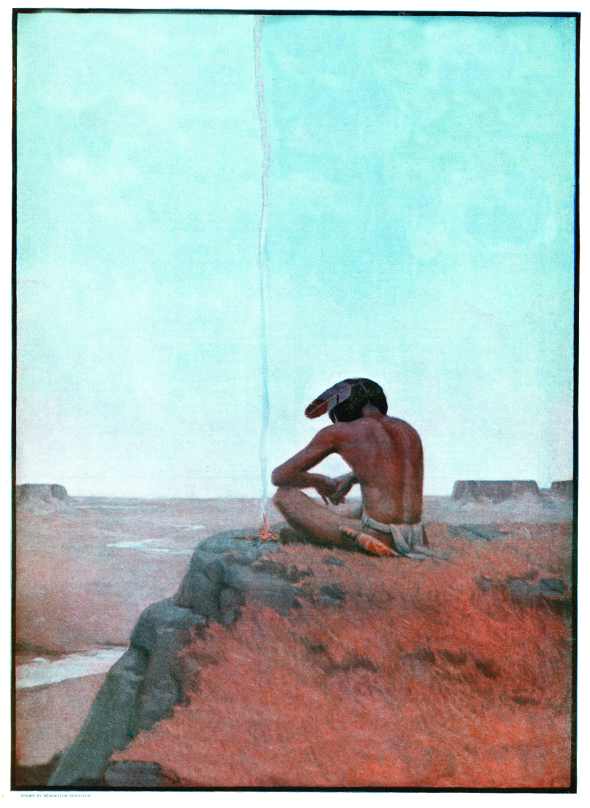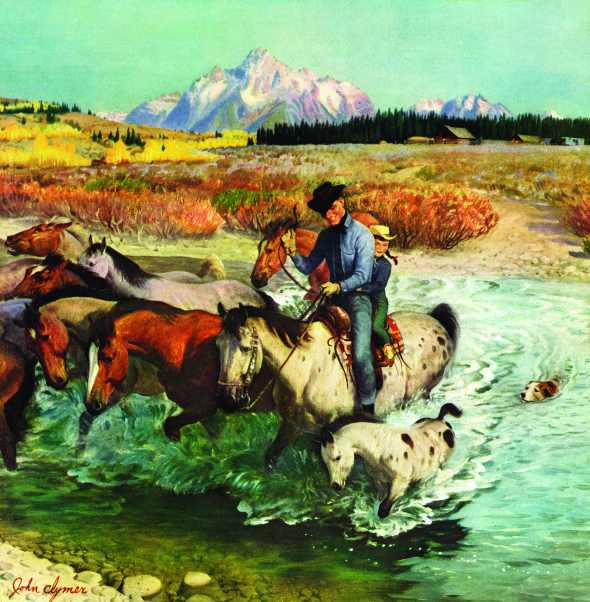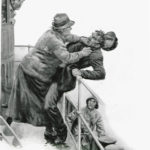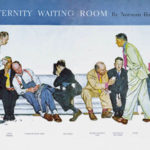Best of the West
The Post Blazes a Trail
In the early part of the 20th century, The Saturday Evening Post commissioned numerous illustrations that collectively helped define the American West for the rest of the country. One of the best known of these artists is N.C. Wyeth, appreciated for his wonderful sense of color and light as well as for being an authority on Western culture.

© SEPS
Romantic Vision
A full generation of Americans owe their impression of the soulful, spiritual Native American to artists like Remington Schuyler and W.H.D. Koerner. Interestingly both artists lived, studied, and worked in the east, developing a fascination with Western culture and lore from afar, before making Western art a primary focus.

© SEPS

© SEPS
Riders
As a young man, artist Frank Hoffman settled on a working ranch in Taos, New Mexico, using his own horses and other animals as models for his paintings.

© SEPS
John Clymer painted more than 80 covers for the Post, many of them with Western themes. He’s known for his painstaking research and for the rich historic and geographic detail of his work.

© SEPS
Classic Covers: The Inside Story
In-between the covers of the Post is a world of illustrations, bringing our stories to life. See for yourself.
“The towns … were full of characters and color to an artist who came for the rodeo,” wrote Ruth Koerner Oliver, the daughter of famous Western artist W.H.D. Koerner in 1972. “The cowboys … would hear that Koerner, the artist from The Saturday Evening Post, was there, and they would scout him out, take him along to the chutes.” In the same article, The Koerner Treasury of Western Art, Post editors quote Koerner: “Never could write, never could talk, not good at having my picture taken. Look over the bunch of illustrations I’ve done and you’ll see my life, feel the struggles … know my joys and sorrows.”
Occasionally, an art gallery will contact us here at the Post archives about a beautiful Koerner painting they are representing, wanting to know what story it was illustrated for and when it appeared in the Post. Hundreds of Post stories were illustrated by Koerner from the early 1900s until roughly 1936. This one is from a story in 1928 called “Fur Brigade.”
The story illustrations were eye-catching, which, of course, served a purpose. Look at the one from 1927 by an artist named Arthur William Brown (see below). Two men in tuxes are facing each other, with expressions that are none too friendly. A lovely lady sits on the bench nearby. The caption reads: “‘Well, Sir,’ Said Orr Briskly, ‘When I See a Young Lady Has Been Crying, I, of Course, Ask Myself What Has Been Happening to Make Her Cry.’”
Distinguished artist Anton Otto Fischer is best known for his seascapes and masted ships, which graced many Post covers. But not to be overlooked are his inside story illustrations. In this example from 1939, he illustrates “Tugboat Annie” about to toss a “wuthless hound” into the drink. Apparently, one did not wish to get on the bad side of ol’ Annie. The caption states, “ye ain’t goin’ to risk drowdin’ my boys.” You tell ’em, Annie.
And yes, while most people associate his art with the covers, Norman Rockwell did inside illustrations as well. Sometimes there wasn’t even a story to illustrate—Rockwell just did a great drawing, and the Post made a home for it, letting his art tell the story. Here’s a forgotten one: Maternity Waiting Room from 1946. Every type of dad-to-be is depicted from the “Frightened Novice” at the far left to the “Hearty Salesman” type in the middle to the “Magazine Shredder” at the far right. Well, as long as he isn’t shredding some of those memorable illustrations from The Saturday Evening Post.
Anton Otto Fischer
March 13, 1939
Arthur William Brown
November 19, 1927
W.H.D. Koerner
Summer 1972
Norman Rockwell
July 13, 1946



